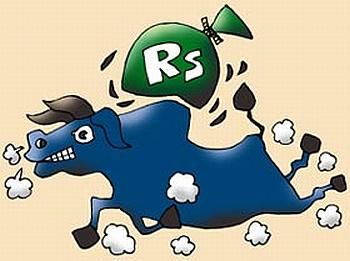
Contrarian stocks can help investors generate much higher returns than buying shares of companies that have shown consistent high growth for years, experts tell Tinesh Bhasin.
Jatin Khemani's Stalwart Advisors took a tough call on Crompton Greaves in March 2016. Most market participants were worried about the company's performance in those days.
Stalwart Advisors picked the stock at Rs 146 in March 2016.
After 18 months, in October 2017, they sold Crompton Greaves at Rs 292 making a 100 per cent return.
This is a classic example of going against the herd or contrarian investing.
The investment advisory company placed its bet on the new management and restructuring of overseas operations.
"There is an opportunity cost when you go contrarian as things don't turn around overnight. But the attractive part of this strategy is that you get valuations cheap when the consensus is against the trade," says Khemani.
Contrarian stocks can help investors generate much higher returns than buying shares of companies that have shown consistent high growth for years.
But picking contrarian stocks needs you to go the extra mile as the stock can remain out-of-favour for a long time and it can test your conviction.
For example, Stalwart Advisors could have gone completely wrong or may have had to wait for years before the stock price of Crompton Greaves rose enough to give it a good return.
For retail investors who are willing to take such chances, there are enough opportunities, especially when the market is chasing a few highly-valued stocks.
Sometimes, when the market mood is sour, many good stocks can take a serious knock.
If you have faith, it could be a good time to pick these stocks.
In the purest form, contrarian investing is going against the prevailing market consensus.
It can be sectors or stocks that are facing troubled times due to the economic cycle, increase in competition, regulations, and so on.
Motilal Oswal Securities looked at contrarian bets to see if this investment strategy can work with Indian stocks.
The brokerage looked at contrarian bets based on popularity with analysts and on valuations to see what works best.
The brokerage's head of research Gautam Duggad and assistant manager (research) Bharat Arora found that contrarian investing not only works but also delivers much better returns over growth stocks.
They shortlisted contrarian stocks on two methods.
For popularity, they looked to buy, sell and hold recommendations of S&P BSE Top 100 index stocks.
They also looked at valuations of these stocks based on price-to-earnings (P/E), price-to-book (P/B) and price-to-cash-flow (P/CF).
"Our findings suggest that a simple strategy of investing in stocks for which analyst consensus has changed from 'net sell to net buy' with a holding period of one year has delivered 24.1 per cent annual returns over the past 10 years," says Duggad.
Growth stocks also outperformed the benchmark, but contra stocks did so by a wider margin.
They also found that price-to-earnings multiple is a better predictor of returns and it outperforms price-to-book significantly.
When looking at stocks that are out of favour, you have to first look at the companies where most investors put their money, that are more traded frequently and a higher number of brokerages analyse them.
Analysts and advisors, therefore, suggest that an investor should look at only the top 100 stocks. Only a few analysts look at companies beyond this universe.
Contrarian stocks require a high-risk appetite as they could remain range bound or even fall lower than the price you pay.
When constructing a portfolio, an investor needs to have companies that have consistent high growth for many years.
Then add mid- and small-caps that have value and a small proportion of contra stocks.
"Depending on your risk appetite and patience, allocate 10 to 20 per cent of the portfolio to contra bets," says Dilip Bhat, joint managing director, Prabhudas Lilladher.
There is a rationale for lowering allocation to out-of-favour stocks. Bhat gives an example of public sector banks.
For over two years, he says most experts recommended them as contra bets. But in this period, their prices kept correcting.
An investor looking at PSBs now would be in a dilemma. S/he has to pick a bank for which bad loans are a thing of the past and can get recapitalised.
Sugar stocks can be contra bets in the current scenario. Many of them are touching their 52-week lows.
Taking a call on sugar stocks, Bhat says, means betting on cyclicals and commodities. An investor needs to have the conviction that when the cycle turns, his stock picks would be among the top performers in the portfolio.
When taking a contra call, don't look at one aspect -- stocks that are out of favour.
Look at the valuations and fundamentals, too.
Have a solid reason for picking the companies.
Experts say that investors have to look at the management of the company, the revenue and profit growth, return on equity, free cash flow, capital intensity of the business, and so on.
Companies with good management but in a bad business cycle are always preferred as contra bets.
Analysts and advisors, therefore, believe that pharmaceutical companies are the best contrarian bets in the current scenario.
Prices of pharma stocks have corrected due to stringent regulations of the US drug regulator. But the management of these companies have a proven track record, and they are sound on fundamental parameters.
The same goes for telecom companies that are facing intense competition, and have seen their earnings dwindle.
Illustration: Uttam Ghosh/Rediff.com











